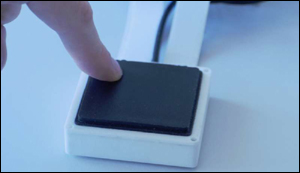A multi-camera optical tactile sensor that could enable vision-based robotic skins
22. 11. 2019 | Tech Xplore | www.techxplore.com
A team of researchers at ETH Zurich in Switzerland has recently developed a multi-camera optical tactile sensor (i.e., a tactile sensor based on optical devices) that collects information about the contact force distribution applied to its surface. This sensor, presented in a paper prepublished on arXiv, could be used to develop soft robotic skins based on computer vision algorithms.
"Compared to the vision capabilities that robots can achieve using modern cameras, the sense of touch in robots is very under-developed," Camill Trueeb, Carmelo Sferrazza and Raffaello D'Andrea, the researchers who carried out the study, told Tech Xplore via email. "Vision-based tactile skins aim at bridging this gap, exploiting the capabilities of vision sensors and state-of-the-art artificial intelligence algorithms, benefiting from the accessibility of large amounts of data and computational power."

The optical tactile sensor developed by Trueeb, Sferrazza and D"Andrea consists of four cameras placed underneath a soft, transparent material that contains an embedded spread of spherical particles within it. The cameras track the motion of these spherical particles, which arises from the deformation of the material when a force is applied to it.
Read more at Tech Xplore
Image Credit: Trueeb, Sferrazza a D’Andrea
-jk-




